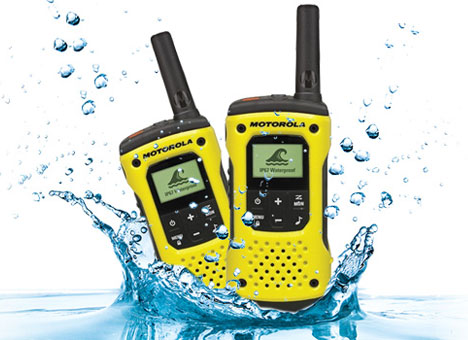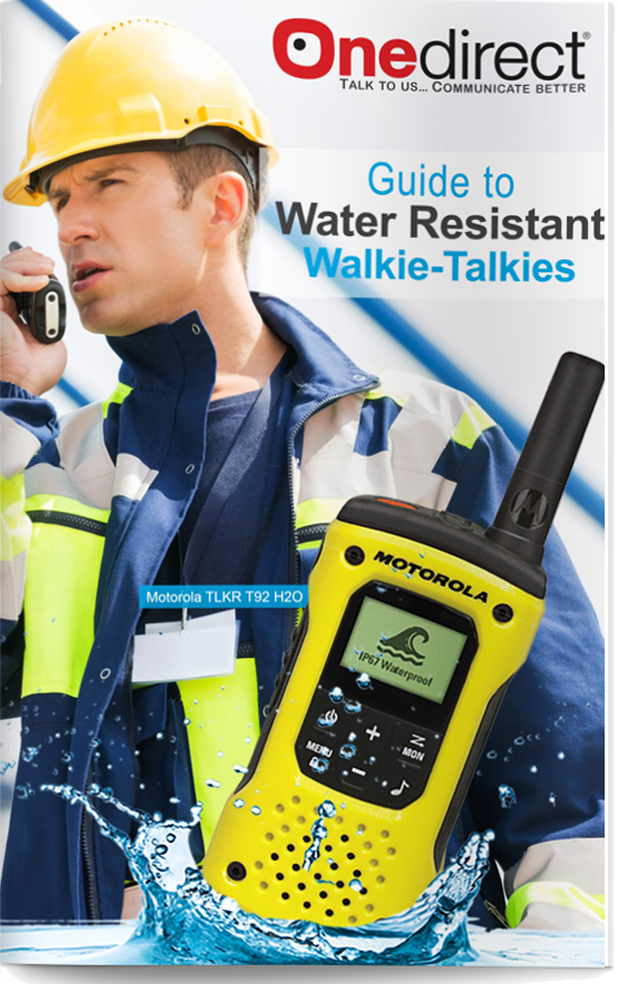My Cart

Waterproof & Water-resistant Walkie-Talkie Guide
When confronted with such a large range of different types of water-resistant two-way radios, it can be challenging to work out exactly which one is best suited to your needs. We've tried to provide simple, clear answers to some frequently asked questions below, to help you make the right choice. If you need a more detailed overview and actual product recommendations, download the full guide below!

Water-resistant walkie-talkies are ideal for anyone needing to communicate over a distance outdoors and in potentially wet conditions, allowing you to easily keep in touch with colleagues or companions without risking damage to your walkie-talkie from rain, splashes, or other exposure to water.
Walkie-talkies that work in damp environments are considered weather-resistant, while weatherproof walkie-talkies can withstand more severe conditions. Water-resistant models will work in light rain conditions and even if they get splashed. A walkie-talkie that withstands harsher rain and can be immersed in water for a period of time can be classified as waterproof.
IP ratings, measure the resistance of a device to solid and liquids. They are made up of two numbers. Put simply, the higher the first digit, the better the resistance to solids (i.e. dust resistance); the higher the second digit, the better the resistance to liquids (i.e. water resistance).
The range of a two-way radio is variable, depending on output power and the environment in which you use the radio. You can generally expect a mile of range per watt of power. However your surroundings, including walls, trees, hills or even bad weather can all provide obstructions to your signal.
Unlicensed radios are a more affordable and simple option, suitable for most applications. Typically offering an output power of 0.5W, these walkie-talkies can be relied on for communications over a distance of approximately half a mile.
Licensed radios are necessary for longer range communications, but can only be used with the purchase of a license. They offer slightly better security and a much greater output power.
Licensed radios are necessary for longer range communications, but can only be used with the purchase of a license. They offer slightly better security and a much greater output power.
Marine radios are equipped to use special frequencies dedicated solely to offshore usage on boats and other craft. They are usually waterproof, but not all waterproof radios are fit for marine use.
Unless you own a boat or have any need to use your radio at sea, you do not need a marine radio.
Unless you own a boat or have any need to use your radio at sea, you do not need a marine radio.
For a lot of uses, a mobile phone (and particularly, one of our robust mobile phones) is a better choice than a walkie-talkie. However, in remote environments, sometimes GSM or 3G signal can be out of reach, while walkie-talkies use radio waves to communicate simply between themselves. They are also more affordable, more dependable in terms of battery life and save you risking potential damage to your mobile phone.
DOWNLOAD ONEDIRECT´S GUIDE
Download Onedirect´s Waterproof/Water resistant Walkie Talkie guide

NEED EXPERT ADVICE?
CALL US WITH YOUR QUESTIONS
0333 123 3050


